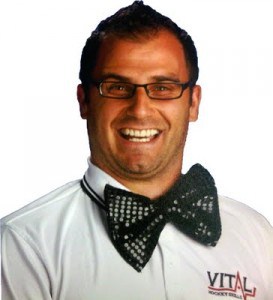19 Mar Stride Mechanics: A Hockey Development Starting Guide
 Stride Mechanics a Quick Hockey Development Starting Guide for Young hockey Players
Stride Mechanics a Quick Hockey Development Starting Guide for Young hockey Players
The number one request I get from parents in terms of private lessons is to work on their son or daughters stride. With the right analysis any stride can be corrected, but a coach needs to be mindful of a child’s body type and careful not to try to force them to look like “the ideal skater”. Chasing after this is a waste of time because there is no such thing. Sure some skaters are more fluid than others, but you can’t force the tall lanky kid to look like “Sidney” out there. Every coach should aim to develop an efficient skater with the tools they have been given (body type, fitness level, knowledge and experience) with proficiency as the ultimate goal.
Hockey Stride: Where to start
So many development coaches out there start tackling stride issues by picking a few show stoppers out of their bag of tricks… ones they did as a player, neat ones they’ve seen someone else doing with a group of kids, and although these might prove useful later, random drills equals random results! Skill development, especially in they area of the stride, needs to be strategic and begin with diagnostic testing. No serious development with a player should begin without an understanding of where the player has been and where they are currently at. So start with a quick diagnostic test and the results themselves will point you in the right direction!
Start the Stride Session with a Quick interview
This doesn’t have to be formal, or pen and paper. It can be a simple conversation with the parent and player while getting dressed prior to
the first lesson. Seek to get specific information… when they started skating, which instructors they have skated with and general strengths and weaknesses. The one thing a lot of coaches make the mistake of doing is only asking the parents these initial questions. You can get a lot of information about the player from the way THEY answer the questions themselves. Body language, eye contact and overall enthusiasm will let you know how hard or easy it will be to ignite a spark out there!
Stride Development Step 2: Fitness test
I know, I know, you see fitness test and all of a sudden figure you have to bring in the fat calipers and VO2 Max Equipment, but in this case, no equipment needed. Just a few simple things in the dressing room can give you a good indication of what the player is capable of right from the start! Before the player starts putting on their equipment ask them to do the following 3 exercises:
1) Heel Touches: Standing with feet more than shoulder width apart, get the player to reach back and try to touch the backs of their heels WITHOUT LETTING THEIR HEELS OFF THE FLOOR. An awkward movement but an unbelievable indicator of core strength, extension and flexibility; 3 of the most important factors in stride power!
2) Squat and Stand: With arms raised at shoulder level, ask the player to sit in the lowest possible squat position. Look for how straight they can keep their back in the process and whether or not the hips invert and knees cave in and knock together. Low squatting points to great range of motion, and the ability to do so without knocking knees, points to strong hip and outer quad muscles which are important to maintain “stride posture”. Once they get as low as possible, you can get a great indication of abdominal strength by asking them to raise the hands above the head and stand up SLOWLY. Proper stride posture is not possible without solid ab strength.
3) Body type/Gait analysis
Just have a look at the player and decide whether they are an: Ectomorph (tall, thin, lanky), Mesomorph (broad shoulders, muscle bulk, large rib cage, stalky legs) or Endomorph(narrow shoulder, less muscle tone, large hips, higher fat content). Chances are they will be a combination of 2 of these body types and you will be more alert to what athletic abilities you may be working with.
Once you decide this, ask them to walk across the dressing room floor in their socks and take note whether they walk primarily on their heels or toes, and pay attention to the integrity of their foot arch as they step. Players with collapsed arches and flat feet usually have a greater difficulty supporting stride extension and snapping the toe at the end, which ultimately results in poor recovery
P.S. Record what you see, not only does it make you look credible, you may need it to refer to later.
Once you have done all of these tests, you are ready to step on the ice and continue with the diagnostics. Tune in next time and we can go over some great on ice diagnostic exercises!




Sorry, the comment form is closed at this time.